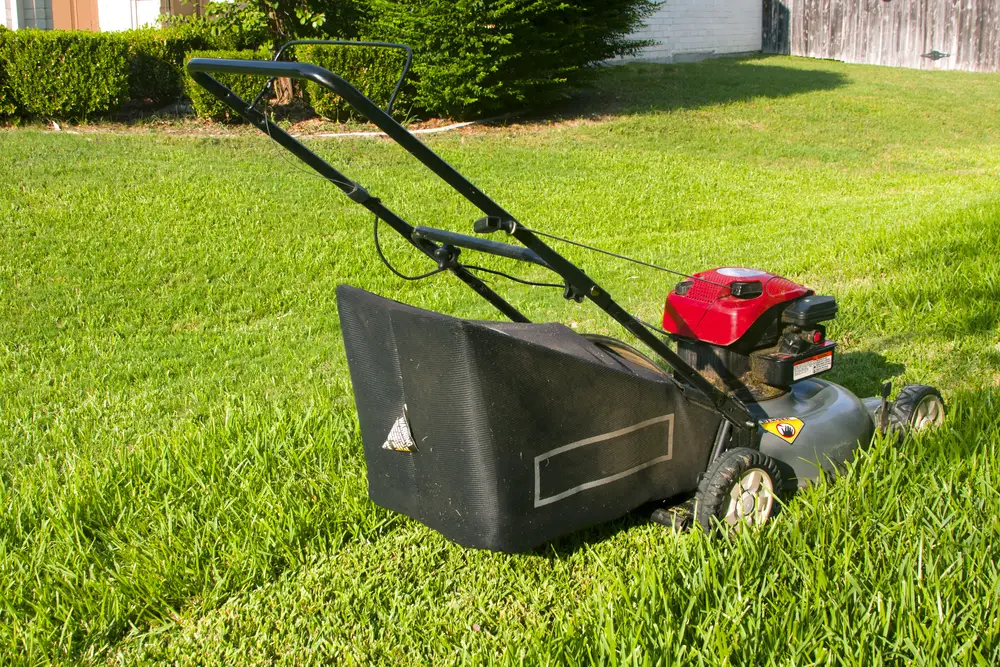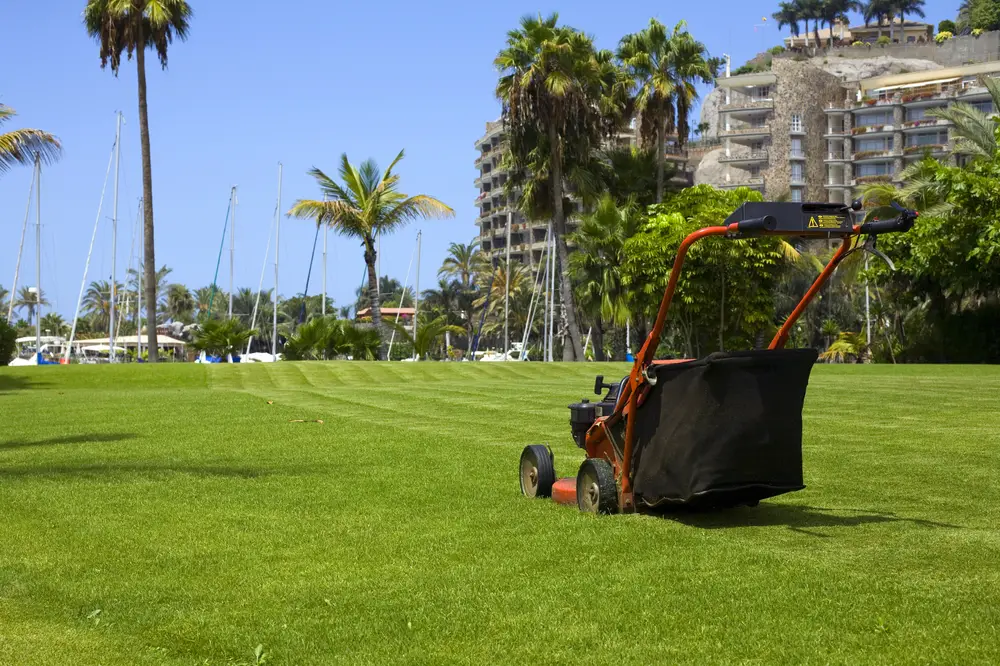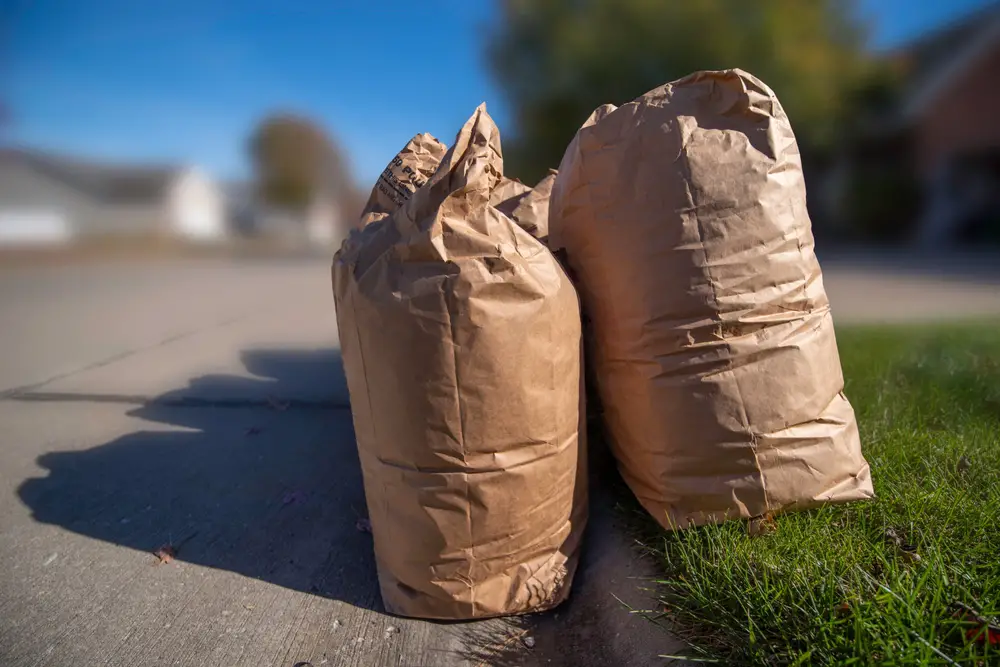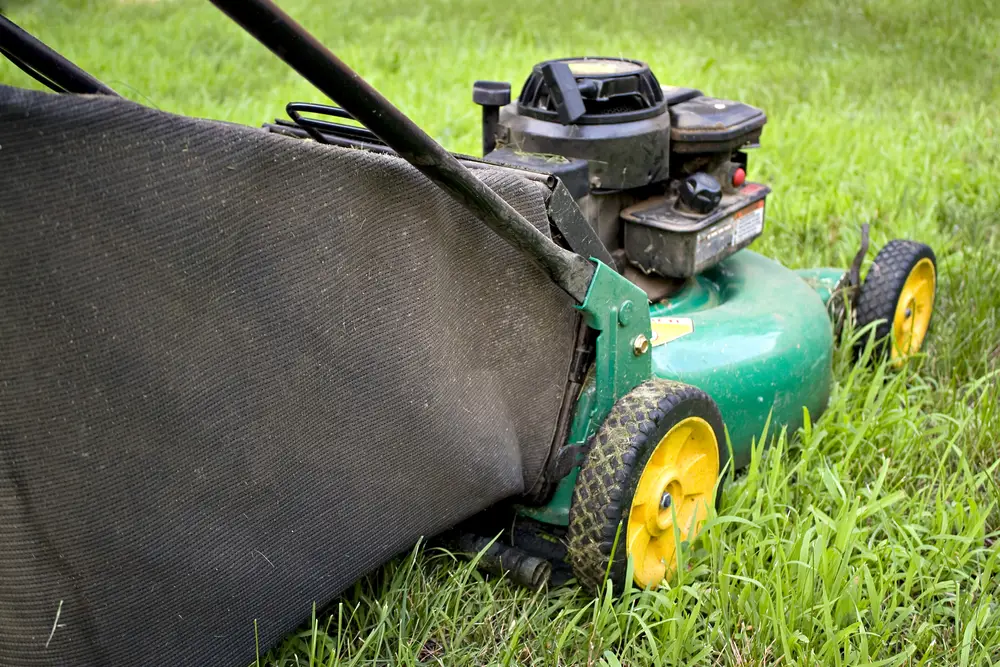In this content you’ll learn:
Key Takeaways
- A grass bagger is any system or bag you can attach to your lawn mower to collect grass clippings.
- Grass baggers make it easy to collect, use, and dispose of grass clippings.
- Grass baggers also help increase curb appeal, remove weeds, prevent lawn disease, lower allergens, and decrease thatch buildup.
Heard of grass baggers and want to learn more about them, including what one is? That’s great because there’s much to know about this excellent lawn mower accessory. Here’s what a grass bagger is, what it does, and why you need one.
What Is A Grass Bagger (And What Does It Do)?

Also known as a “grass catcher,” a grass bagger is a bag you attach to your lawn mower to collect grass clippings as your lawn mower makes them (instead of letting them lay on your lawn). They’re great accessories for anyone wanting to keep their lawn looking neatly manicured or for anyone wanting to collect grass clippings to use later.
Typically, “grass bagger” refers to walk-behind or push lawn mower types. In contrast, “collection system” typically refers to baggers attached to riding or zero-turn lawn mowers.
What Kinds Of Grass Baggers Are There?

Depending on the lawn mower type or your preference, your bags could differ.
Let’s discuss the options!
Walk-Behind Lawn Mowers
If your walk-behind lawn mower is compatible with the bagging feature, you’ll find a spring-loaded door on the back of your lawn mower. Once opened, remove any attachments, such as side or rear discharge pieces and attach your collection bag (bagger). Typically this will attach by two hooks that rest on a bar, allowing the bag to hang and sit just over the opening.
You may also be able to find universal bags as well, although instructions may vary depending on the attachment hardware. These baggers are made from plastic, composite, mesh, or cloth materials.
Riding Lawn Mowers
It is a slightly different process for ride-along lawn mowers or zero-turns. The airflow created by the blades still pushes the clippings toward the back of the lawn mower, but first, the clippings pass through a collection chute. All of this together is called a collection system.
You attach the bagger to the back of your lawn mower and the collection chute to the discharge side of your lawn mower deck. How these pieces connect may vary depending on your lawn mower.
The plastic versions of these bags are called bins, and you can use them by themselves or with disposable liners. Bags for these lawn mowers also come as large cloth or mesh bags below a plastic housing.
The Lawn Tractor Bag
This option is cheaper as it does not involve a whole system but only a heavy-duty bag made from durable fabric and a zipper or drawstring. Lawn tractor bags are available in various sizes and from most hardware stores.
Purchasers commonly use these with lawn mower vacuum systems and large pull-behind wagons.
(Bonus) Single-Use Disposable Bags
These aren’t “grass baggers,” but you can use these disposable bags to bag grass by hand. When finished, you set these out with your trash so the workers can pick them up.
You can use these bags for more than grass too, as you can use them for sticks, leaves, weeds, and any other organic material you come across.
Where Is The Grass Bagger On A Lawn Mower?
You can find a grass bagger at the back, no matter the lawn mower. This keeps it out of the way and still allows for easy use of the lawn mower.
Typically, the long collection chute sits to the right of the lawn mower, connected to the grass bagger and the discharge side of the lawn mower deck, so it can move the grass clippings into the bagger.
Why You Need A Grass Bagger

Grass baggers are a convenient way to keep your lawn tidy, contribute to the curb appeal of your neighborhood, and keep the lawn healthy in terms of lessening weed density and disease spreading.
Let’s start with curb appeal.
Curb Appeal
Bagging your yard waste, such as grass clippings, leaves, sticks, and twigs, contributes to your home’s curb appeal. Keeping your lawn clean is also considerate of your neighbors, as everyone wants to live in a nice community.
Easy Clean-Up
A bagging system attached to your lawn mower makes yard maintenance more convenient for you, only requiring you to empty the bag occasionally, depending on the size of your yard.
Having no bagger requires you to rake up the clippings from your entire yard. You could always leave the grass clippings where they lie, but using a bagger to collect them gives you more options for using them.
Removing Harmful Materials
Bagging your clippings allows you to responsibly remove any harmful elements from your lawn conveniently and easily!
Let’s start with weeds.
Weeds
Mowing weekly with a bagger collects weed particles and seeds loosened due to the mowing. Mowing without a bagger allows them to remain on the lawn to reseed, grow, and spread further.
Disease
Most lawn diseases are fungi, and they can ravage your lawn if not correctly taken care of, as they easily spread due to wind, rain, mowing, and even walking across your lawn.
Collecting and removing grass clippings from diseased lawns prevents the disease from spreading as much. In addition, leaving grass clippings on a diseased lawn creates the ideal environment (warm, shaded, and moist) for a fungus to thrive.
Lowering Allergens
Removing grass clippings from a lawn helps prevent pollen and grass allergies. Mowing already releases many allergens into the air, so removing additional flare-up causes, such as grass clippings, is best.
Decreasing Thatch Buildup
Thatch is a natural part of a lawn’s layers. Old clippings and other decomposed materials make up thatch, which rests on the soil and creates a barrier between that soil and the grass.
A healthy amount of thatch, about half an inch, acts as a good natural filtration system for water before it hits the soil and roots absorb it.
But leaving clippings on your lawn can increase thatch buildup, causing improper water and oxygen absorption by the grass. This is where bagging comes to the rescue! You will maintain a proper amount of thatch by creating a good balance of bagging while intermittently allowing your clippings to remain on the lawn as a natural source of nutrients.
Are Grass Baggers Worth It?
Whether or not grass baggers are worth it is up to you and your situation. If you prefer a perfectly maintained lawn, a grass bagger helps. If you prefer to recycle them into the lawn, you won’t need a grass bagger, or at least not as often.

They suck. Cant even get a diagram to replace belt. 2 belts broke . Never buy another one